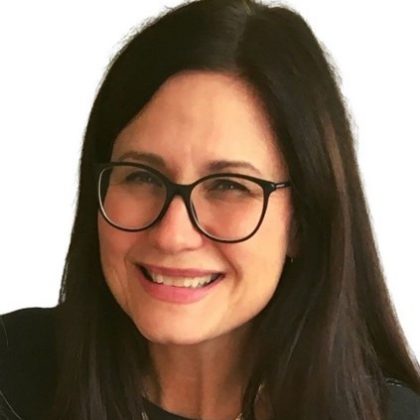Art therapy and social democracy
Perspectives
Perspectives is dedicated to sharing the knowledge and viewpoints of those with a unique or specialist understanding of art therapy.
In this interview, Jordan Potash, art therapist, Associate Professor at George Washington University, and Editor-in-Chief of Art Therapy: Journal of the American Art Therapy Association shares the journey and belief systems that have driven him to advocate for the relationship between art therapy and social democracy.

What initially drew you to the field of art therapy?
I’ve always been involved with the arts and some of my earliest memories relate back to the arts, but I never had a desire to be a professional artist. My interests were always focused on doing something that would be helpful, so when I learned about art therapy, I dove into it.
At Syracuse University, I pursued a double major in psychology and studio art. There also happened to be a psychiatric facility within walking distance of my campus and I was introduced to an art therapist who, as I already had a background in ceramics, took me on as a studio assistant. Initially, I helped with kiln management and glazing, but with the support of the art therapist, I gradually became more involved in helping clients with their art. While in university, Ms Francis MacMillan Parks mentored me on nonviolent, socially engaged practices based in community service and activism.
My undergraduate thesis project focused on coming out for LGBT folks. My interest in social justice and community development naturally led me to continue on to a master’s in art therapy. My thoughts were that this field would give me the skills to work with people and communities and towards intercultural understanding and peace.

How did your views on social democracy evolve?
I have long been driven by social justice ideals. These are based largely in Jewish teachings that have influenced me for my life, but also due to my experiences as a gay man. Aside from my personal experiences of injustice, my mentors have instilled in me a strong sense of allyship in that we should strive to work in coalitions – especially when we can use our power and privilege to the benefit of others.
Recently, I have been paying more attention to how social justice pursuits require democratic systems to dissent, criticise and mobilise without government retaliation. Seeing how these systems have been under attack across the globe over the past decade, I have been studying intersections of peacebuilding, democracy, activist art and art therapy.
I have come to see that many people, including art therapists, take democracy for granted. I have also been in this situation – and might still be if I hadn’t paid attention to the erosion of democracy in Hong Kong (where I had lived for eight years) and attacks on the U.S. governance during the Trump presidency.
Lessons from history and current social movements around the world point to the importance of simultaneously championing social justice and supporting democracy. This latter part is not often discussed in art therapy approaches to social justice, but it is crucial, as it is what allows us to organise, criticise and dissent.
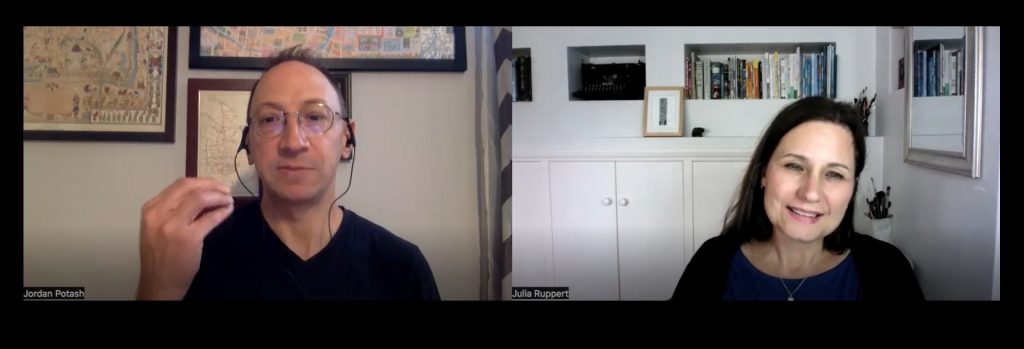
How have your strengths and interests influenced your current work and thinking?
My particular strengths involve finding ways to build connections and relationships with clients, agencies and partners. What has helped with that is holding a very open definition and broad application of what we as art therapists can do.
For most of the history of our field, the dominant narrative has focused on psychotherapy and keeping art therapy within that realm. But I don’t believe that is our only strength – I think it’s that plus. The diverse history of our profession reinforces that art therapy has always been expansive – especially as practised by people of colour and those who worked with marginalised populations.
Within these partnerships and connections, the question of ‘what specifically does art therapy offer that maybe a community artist or a social worker wouldn’t?’ is also something I think about a lot. Not because we’re better, but just because we have a different offer.
One of our unique contributions is the centralising of art-making processes to enable individual, relational and communal health and wellbeing. So, whereas helping service professionals can offer wellbeing work, and artists can provide the creativity work that brings people together, art therapists are uniquely situated to bring all of that together in a seamless way that considers the psychological, the physical, the sociological – where art is always first and foremost. Not just art in terms of ‘let’s make a project that’s going to make us feel better or beautify this space’, but projects that are really invested in people’s stories and their expressions – because these stories can bring people together. We can bring our internal selves together from the tradition of insight work by finding our stories about who we are – just ‘building up the individual’.
However, these stories also connect us to other people and as part of relationship building, which then connects us more globally to other people with similar life experiences, either in our times or across time and space. Overall, these stories help us see that other humans have also been dealing with the same things that we deal with now, repeatedly, individually, relationally and sociologically…
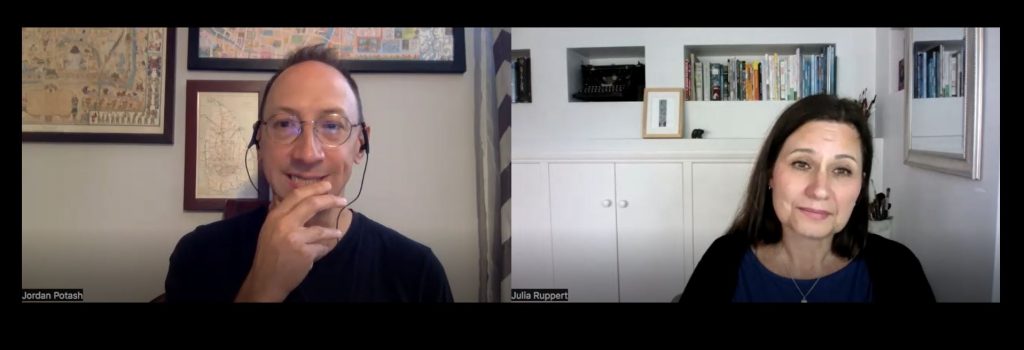
How does your work within the theme of social justice currently manifest itself?
I continue to pursue work as an art therapist that focuses on disenfranchised client groups. Instead of only working with clients, I have become more involved in advocacy around social policies.
My main client work at this point is with young adults who are unhoused, so I have been working with the Poor People’s Campaign: A National Call for Moral Revival. I’ve been working as part of their Arts and Culture committee for creating signage for demonstrations but also art based on their demands and policy recommendations. I have also co-facilitated workshops on art therapy-informed intergroup dialogues.

You mentioned art therapy-informed intergroup dialogues – what does this entail?
Intergroup dialogue is a mediation and peacebuilding way of holding people in conversation, where we keep each other in relationship on difficult topics. And the arts are already used in that way. For example, people will use art as an icebreaker, or for different purposes.
But I really feel that, as art therapists, the way we engage people (who don’t see themselves as artists) to create art is powerful. And not ‘you did this’ just to make space to get to the dialogue, but to really centre the dialogue in this art, and be willing to investigate it; for its potential metaphors, its potential symbols, its potential relation to the person, its relationship to the other images they see.
I really don’t see that process in the literature of other folks. And I think it’s a special contribution where we have developed a lot of capital in the mental health realm, but it doesn’t need to be our only realm. There are physical ills, psychological ills and social ills and we as art therapists can contribute to these areas too.
The workshops we led on Intergroup Dialogue (Potash & Gyimah-Boadi, 2021) showed that, in a short time, participants could reflect in a way they don’t often reflect or connect with others in a way they don’t often connect. Although this led to insights, importantly, it also led to questions within a societal sphere with the end goal of peacebuilding and social justice.
Could a mediator who is savvy in the arts, or an artist who is savvy in group dynamics, run the same workshop? Maybe. But the idea that there might be an arts professional who has some side skills, who can run this work really well or a mediator who is also creative is very individual and situational. Nothing in their professional training would lead them to this moment. In comparison, art therapists are taught from the beginning to respect the creative process, to look at the reflective components of that to help clients in their own meaning-making processes and to guide those conversations to their larger health goals. All of this is central to what we do.
Whereas typically, in our training, we focus on mental, psychological or emotional health goals, it’s not that big a leap to extrapolate these goals to explore questions like ‘What kind of society do we want to live in? What kind of goals do we have for justice? Or for working on the social ills that are facing us?’ I think that’s where art therapists have a unique opportunity and a role to play. Not every art therapist is well trained in social justice issues or in community dialogues, but I do think that is so central to who we are, and I don’t know any other profession for which it is.
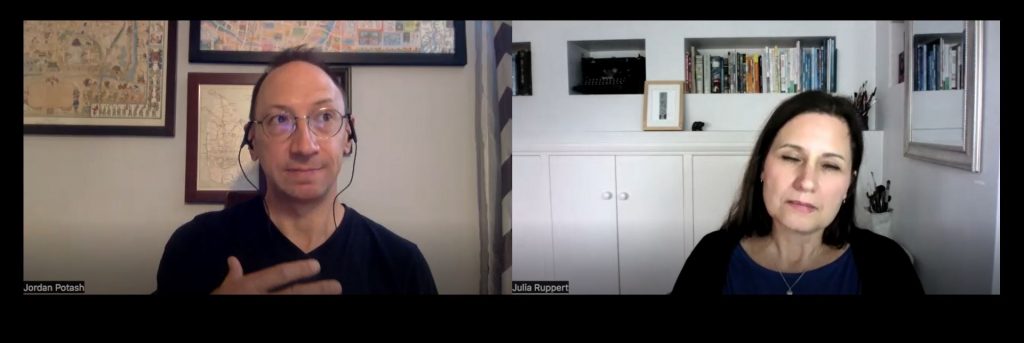
What are you hoping art therapists will take away from your upcoming online course on advocating for social justice and democracy?
Social justice is a big issue, and it’s so much bigger than any of us. As it goes back through generations, I think a lot of folks conclude that it’s too big: ‘I can’t change the system.’
What I’ve tried to do with the course is to help shift people’s mindsets. Looking at art therapy through a democracy and peacebuilding lens encourages us to look at the work we do in a more expanded way. For example, when working with clients, consider what socio-political forces are impacting them and limiting their ability to reach their health goals. When we refocus from the personal – i.e., ‘if you could just figure out how to fix your depression, you’ll be okay’ – to justice and peace, we recognise there might be other things going on. For example, social policies or agency regulations may be making it hard for clients and really impinging on their power. If the forces of poverty or racism or sexism etc are making it difficult for clients, then that’s something we can at least acknowledge, if not challenge and remedy.
Part of democracy and peacebuilding involves looking at how our society is set up in ways to promote equity, and asking in what ways do we need to relook at our agency policies to make them more open, democratic or accessible, and then consider what in our society might be making that hard? With these frameworks in mind, what I try to take people through in the course is to look at their own context and what is possible.
I think a lot of people come in thinking, ‘If I don’t organise a massive campaign and get a million people into the streets, or get to regime change, I haven’t succeeded.’ But there are things we can do in our everyday lives and practices that help to support social justice, democracy and peacebuilding.
In recent years, I think it’s something that a lot of people take for granted – the ways our profession has really been enhanced by living in a democratic, open and free society – and we need to consider what responsibility we have to make sure that continues. Not just sitting back and saying, I’m doing enough, because if democracy is important to us, if justice is important to us, if peace is important to us – then we have to work towards it.
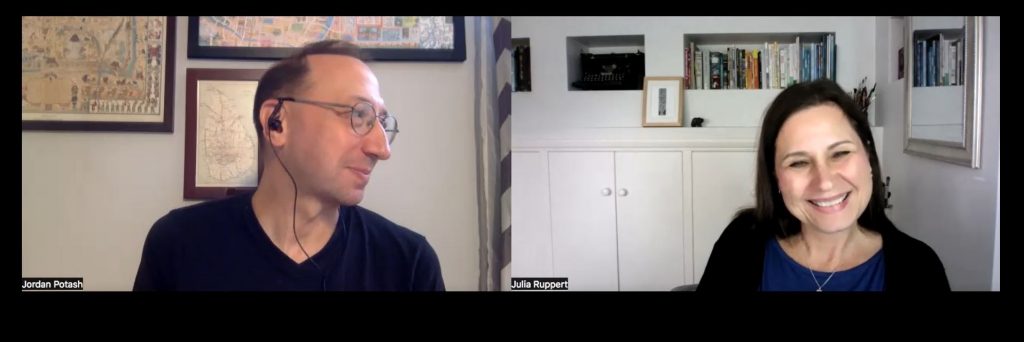
Upcoming course
Join us for our upcoming online course with Jordan, ‘Citizen art therapists: advocating for social justice and democracy’.
Articles
- Read Jordan’s recent article in the International Journal of Art Therapy, ‘Searching for wholeness as a Jewish art therapist’.
- View Jordan’s editorial in Art Therapy: Journal of the American Art Therapy Association, ‘Resilience and Transformation: Reflections on 2020’.
Members of the British Association of Art Therapists have full free access to all articles in the International Journal of Art Therapy and Art Therapy: Journal of the American Art Therapy Association via the memberzone.
References
- Potash, J. S., & Gyimah‐Boadi, A. (2021). ‘Enhancing intergroup dialogues through art and art therapy.’ Conflict Resolution Quarterly, 38(4), 335–347.
